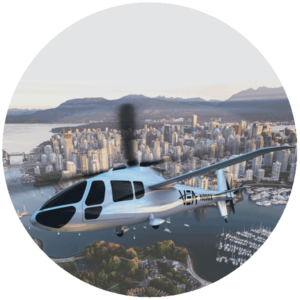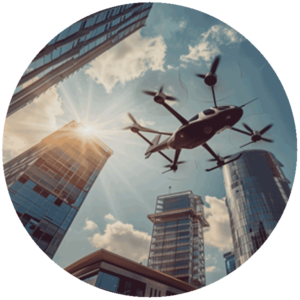
Alane powered aircraft fly further and safer than same weight lithium ion battery aircraft
Alane-powered aircraft offer unparalleled performance, enabling them to fly further and safer compared to aircraft equipped with lithium-ion batteries of the same weight. This advancement is particularly significant in the realm of alternative energy vertical lift, where Alane fuel technology enhances both the range and safety of aerial operations.

Hydrogen e-VTOL
Electric Vertical Takeoff and Landing (e-VTOL) offers a sustainable alternative to traditional fossil fuel-powered aircraft, with lower emissions and extended flight range. Alane’s high energy density and lighter weight enable e-VTOL aircraft to carry heavier loads for longer flights while maintaining agility, enhancing operational capabilities and addressing sustainability targets.
LEARN MORE

BLOS Drone Delivery
Beyond Line of Sight (BLOS) drone delivery involves drones transporting goods over distances where direct visual contact isn’t possible. Alane’s high energy density enables drone BLOS systems to extend flight ranges, carry heavier payloads and ensure operational flexibility.
LEARN MORE

Unmanned Aerial Vehicles
Unmanned Aerial Vehicles (UAVs) are aircraft that function autonomously without a human pilot onboard. They fly autonomously on pre-programmed waypoints or AI algorithms. UAVs have a wide range of applications, including aerial mapping, agriculture, search and rescue, infrastructure, environmental, and military.
Global drone market size is forecast to reach US$54.6 billion by 2030, with the commercial market growing at a 7.7% CAGR. According to the report Fuel Cell UAV Market, the global fuel cell UAV industry size generated $1.56 billion in 2022 and is anticipated to generate $5.38 billion by 2032, witnessing a CAGR of 13.4% from 2023 to 2032.

Air Taxis
Air taxis are small, often unmanned, electrically powered aircraft designed for short-distance urban transportation. They typically operate on vertical takeoff and landing (VTOL) technology, enabling them to navigate congested urban areas and land in tight spaces without requiring traditional runways.
These vehicles are envisioned to provide on-demand, point-to-point transportation services, offering a fast and efficient alternative to ground transportation for short trips within cities or between urban centers.
According to a Morgan Stanley Research study, the electric air taxi market is projected to reach $1.5T globally by 2040, with startups and major brands such as Boeing, Hyundai, Airbus, and Toyota actively involved in development.

